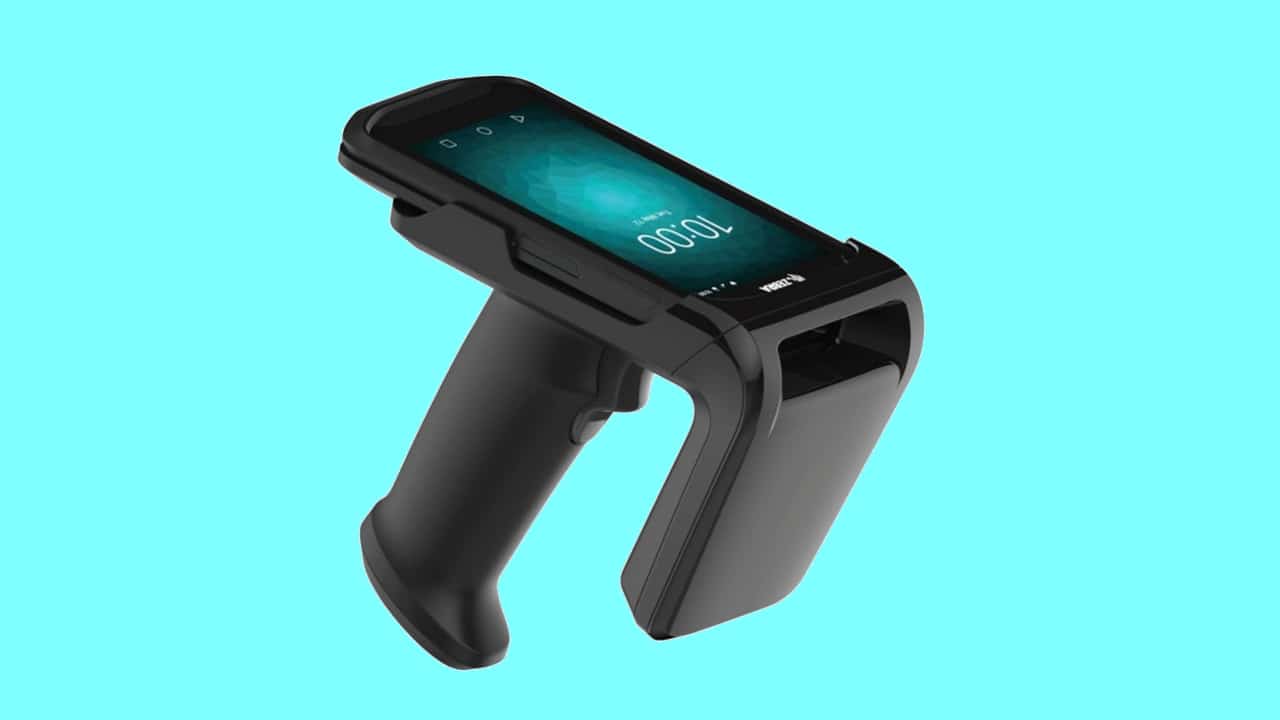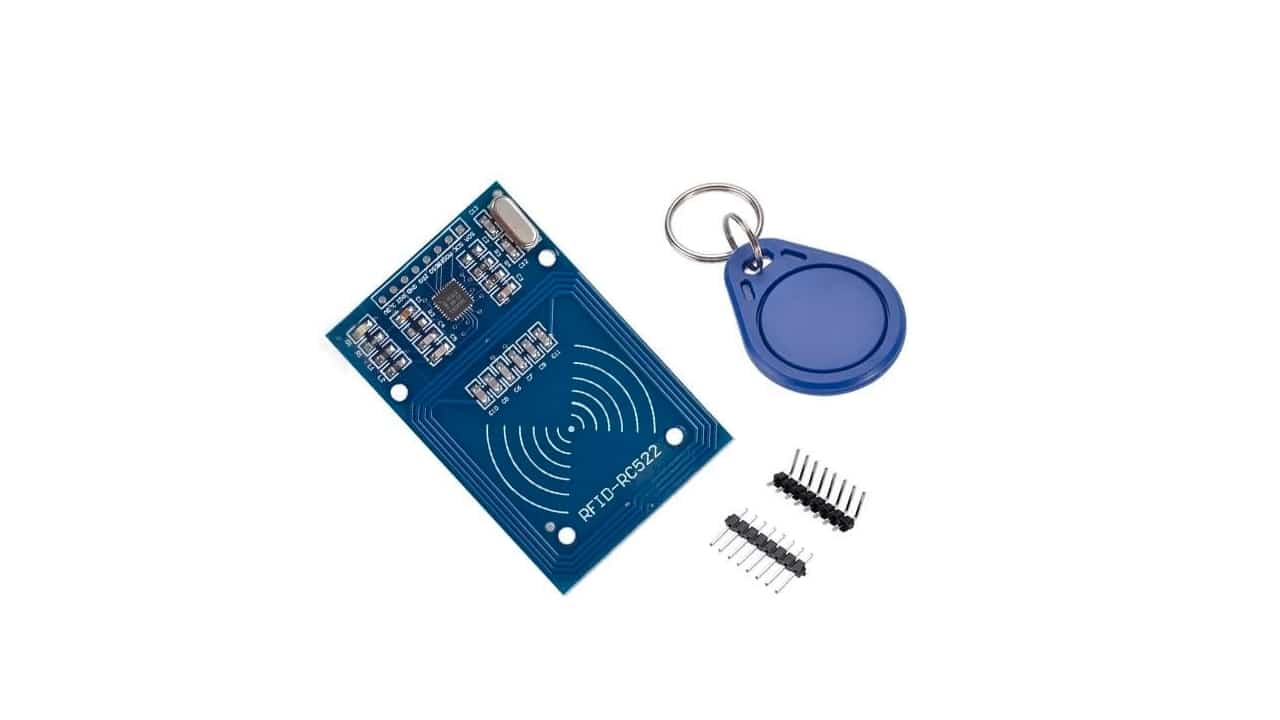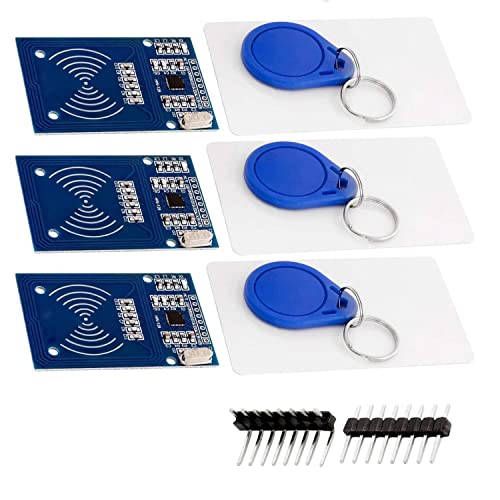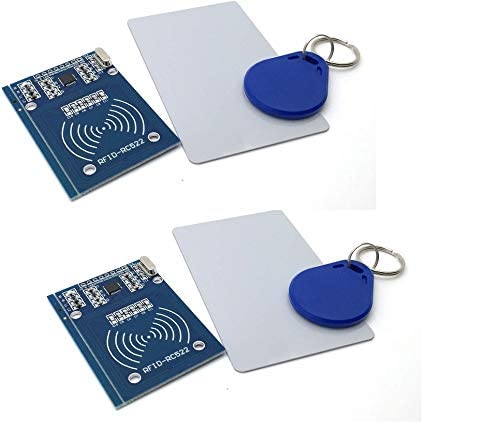
Un RFID reader it is a more used device than you may think. Surely you have seen some using this type of device for identification tags, or to obtain data of some kind. Well, in this article you will learn what exactly one of these RFID readers is, how it works, what it can be used for, the potential of this type of system, as well as the advantages and disadvantages that this type of radio frequency identification equipment may have with respect to a other systems.
What is RFID technology?
La RFID (Radio Frequency Identification) It is a type of technology capable of reading and writing data remotely, without contact. For this, an RFID reader/writer is needed, as well as the medium from which the readings are made or where the writings are made. This medium is the RFID card or tag like the one you see in the image.
Types of RFID
It is important to note that there are various types of frequencies to listen to different channels, and that not all RFID readers or tags support. Therefore, it is important to take into account the compatibility between the two so that they can tune in and share data. Obviously, those operating frequencies will always be in the radio frequency (RF) range of the electromagnetic wave spectrum. That means that it is found in frequencies and wavelengths from the ELF (Extremely Low Frequency) and the IR (infrared).
There are three types of frequencies for RFID that are:
- Low frequency or LF (125-134KHz)
- High frequency or HF (13,56MHz)
- ultra high frequency or UHF (433, 860 and 960 MHz)
Remember you are radio waves they will not behave the same if the frequency varies, so it is important to choose the appropriate operating range for each case. For example, the higher the frequency, the higher the data transmission speed, but the more sensitive it will be to interference or obstacles. That is, the UHF is the fastest, but it will not have the same good coverage that the LF has.
What is an RFID reader?
Un RFID reader allows easy and reliable identification. The reading range can go from several centimeters of proximity for passive tags, to several meters using active RFID tags. Remember that passive tags are more compact, it is the reader that supplies power, so it must be closer.
To do this, you have a sensor capable of capturing radio waves coming from the tags or cards, and these waves will be decoded to obtain some type of information from the label. In addition, all this is done quite securely, in fact, some banking entities use this type of system, although it has its weaknesses, of course, such as the copying of these cards.
PREMIUM QUALITY
As usual, there is not only a RFID reader type, but can be separated into four groups:
- Fixed: they generate waves through antennas towards the tags, receiving and decoding the information that the tag emits. For example, like the ones on the access doors.
- Portable or manual: they can be carried from one place to another, they are not fixed in one place. Therefore, you can use the RFID reader to go where the card is for reading. Some of these readers use LTE or WiFi technology to connect, and there are even Bluetooth to link it to a mobile device to obtain information in apps.
- Dessert: These are hardware peripherals that connect to the PC via a USB port. They are usually quite affordable and simple. And basically they are used for the short range (Near-Field). For example, to perform checks, etc.
- RFID tunnel: designed to read boxes with RFID tags inside. For example, there may be an arch through which the tagged boxes pass. It is something widely used in industries or warehouses.
Advantages of RFID systems
All the and advantages of RFID technology are:
- Good capacity to store data compared to other systems.
- Versatility in terms of the types of data that can be stored (dates, origin, identification, access codes,...).
- Individual traceability possibilities.
- Great precision and reliability in the readings.
- Long service life.
- Reading speed up to 25 times higher than the barcode.
- Readings at greater distances than the bar code, up to a few meters.
- It will work no matter how dusty, dirty, or poorly visible the card is.
- It is not very sensitive to orientation, so it is not necessary to focus it so directly.
- They are not easy to fake.
- They can be seamlessly integrated with other control systems.
RFID Reader Applications
An RFID reader and RFID cards have large number of applications, more than you can imagine. For example:
- Traceability in the product supply chain, identifying the date of manufacture, the movement followed by the merchandise, company information, passage through customs, transport company, etc.
- Security systems, such as access control with electronic locks, signing in companies, registration of entries and exits, etc.
- Logistics and inventory, to be able to keep track of the products in stock, detect lost or stolen products, check other details in the chain of custody, etc.
- Security control in shops, as in jewelry stores or supermarkets, using tags on the products for sale so that if they have not been paid they are detected at the exit. These types of tags, when checked out, will be marked as paid, and are no longer detected. You will have seen that many supermarkets and stores have these alarm systems.
- Pharmacy, health, food, and cosmetics, to control the chain of custody and supply, to keep greater control of the dates, origin and other details of these sensitive products. You can also trace and quickly eliminate batches that may be defective, contaminated, etc.
- Control of disposable consumables, such as tools used in hospitals in operating rooms to reduce medical errors, avoid forgetting utensils inside the patient's body during an intervention, etc.
- in libraries It could also be used for inventory, to control the books that go out and those that come in, details of the user to whom the book was lent, etc.
- Files and documentation, controlling and always having important documents located in administrations or centers where there may be thousands or millions stored.
- Aviation Baggage Check, to tag passenger bags and accurately track luggage through the airport, at the time of loading and unloading, etc. This helps reduce baggage loss and improve punctuality.
- sports timing, using in athletes, to control participating runners, stage times, track courses, etc.
- Animal traceability, with the RFID chip injected into dogs, among other animals, to identify the owner to avoid abandonment, the health status of the pet, contact information in case of loss, etc.
RC522 or MFRC522 module for Arduino
Of course, there are RFID modules for reading tags for Arduino. The RC522 is one of them, with a MFRC522 integrated circuit manufactured by NXP Semiconductor and that can be easily integrated with Arduino or with ESP8266. This module is usually already accompanied by an RFID tag (with NXP MIFARE technology) or card to test.
The cards usually have a memory of 1 – 4Kb, divided into sectors or blocks to store different data. In addition, they can be read from about 35 cm away, since they use a 13,56Mhz HF band. However, the reader module only has a range of about 5 cm, since above that it might not work properly.
As for the Technical specifications of the RC522 module are:
- ISM band of 13.56Mhz (HF).
- SPI/I2C/UART interface.
- 2.5v to 3.3v operating voltage.
- Maximum operating current intensity of 13-26mA.
- Minimum current intensity 10µA.
- Logic levels 5V and 3v3.
- 5cm reach.
- 8 pin connection:
- VCC: power pin between 2.5v and 3.3v.
- RST: to shut down (LOW) or to restart (HIGH).
- GND: ground pin.
- MISO/SCL/TX: triple function for SPI interface, slave output and master input. When I2C is active it is used as a clock signal, and as a serial output if UART is active.
- MOSI: input for the SPI interface.
- SCK: SPI interface clock signal.
- SS/SDA/RX: signal input pin for SPI if enabled. If it is enabled, I2C acts as its data input and as a UART data input if it is enabled.
This RFID reader module also has an interesting detail, and it is the interrupt pin, which will let you know if there is an upcoming RFID card.
For connect RC522 module with Arduino, The connections should look like this:
- VCC to 3.3V from Arduino
- GND to GND of Arduino
- RST to pin 9 of Arduino (you can choose another)
- IRQ not needed, stays offline
- SPI:
- MOSI at 11
- MISO at 12
- SCK to 13
- CS at 10
If you already have the library installed on your Arduino IDE, you can do the following:
- Open Arduino IDE, and make sure you have the board connected to the PC via USB, and that the connections to the MFRC522 are correct.
- Archive
- Examples
- MFRC522
- Inside here you will find several examples of RFID code that you can use to learn, such as:
- DumpInfo: It is used to read the RFID card and displays the information through the serial monitor on your PC screen.
- rfid_write_personal_data: You can write personal data to the RFID card.
Where to buy RFID readers
Finally, if you are looking to buy this type of material, we make some recommendations of the best RFID readers, copiers, and cards necessary:









